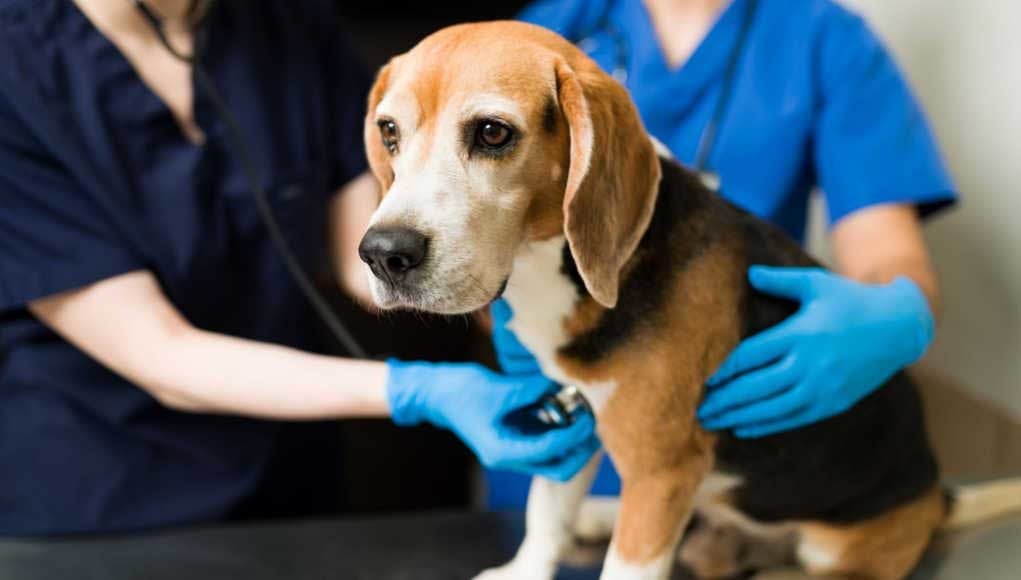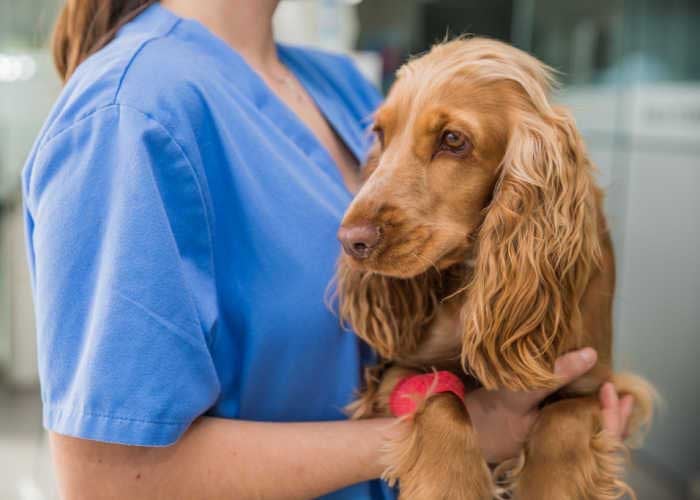Table of Contents
Cancer has been a major health problem in dogs. Since it can develop in any cell of the body, how do you recognize basal cell carcinoma in dogs?
According to the Veterinary Cancer Society, 1 in 4 dogs is likely to develop cancer. But that should not necessarily mean a death sentence to our furry friends.
We understand your ball of fluff is a big part of your family, and you want to give it the best care possible. Good news, we’re on the same page!
Know that research is ongoing to study cancer at the cellular level. Cancer care centers are devoted to providing clinical expertise and progressive treatment options.
Furthermore, dog charities aim to do outreach and educate pet owners to give our canine companions the fighting chance at life.
So, to help raise awareness about the disease, we will now make an effort to be as detailed as possible on specific dog cancers.
In this article, we will focus on canine basal cell carcinoma.
Basal Cell Carcinoma in Dogs
It is a common form of skin cancer in dogs originating from the cells found in the bottom part of the epidermis, the outermost layer of the skin.
The epidermis lies above the dermis (which feels different sensations and produces sweat) and the hypodermis (which serves to connect the skin to the bones d muscles).
Its bottom part acts as the defensive layer and contains different cells, including those involved with the inflammation.
When there is an uncontrolled division of basal cells, abnormal growth or mass develops.
Basal cell tumors usually appear around the head, neck, or shoulders as hairless masses.
According to VCA Animal Hospitals, any breed can be stricken but is more commonly seen in Cocker Spaniels, Kerry Blue Terriers, Poodles, Soft-coated Wheaten Terriers, and Wirehaired Pointing Griffons.
You may wonder what causes basal cell carcinoma in dogs when they have hair to be protected from the sun.
Well, you should know that the cause of this disease, or any tumor or cancer, is largely unknown.
Sun damage to the skin can be a factor in humans but not likely in dogs. Given that the majority of dogs have a lot of hair, the link to light exposure hasn’t been found in dogs.
Although no one exactly knows why basal cell tumors develop, they may be linked to a few risk factors such as the environment, hormonal imbalance, viruses, or simply inherited from those developing the disease.
RELATED: 10 Environmental Causes of Cancer in Dogs
Diagnosis of Basal Cell Tumors
The vet will start with a thorough physical examination to check for a canine basal cell tumor.
He will take into account the health history and will perform further tests, including urinalysis and a complete blood count.
The diagnosis of skin tumors in dogs is based upon a type of biopsy procedure called fine needle aspiration.
It involves a syringe with a very thin, hollow needle to suction out a sample of cells directly from the tumor.
The veterinary pathologist then places them on a slide to examine under a microscope.
In some cases, FNA does not provide entirely clear results. So, a biopsy may be necessary wherein specialists will surgically collect a piece of tissue from the mass.
Pieces of the tumor are then studied to reach an accurate and reliable diagnosis. This microscopic examination is called histopathology, which not only helps to make a diagnosis but can indicate how the tumor is likely to behave.
It is important to remember that not all lumps and bumps are cancerous.
Most skin tumors in dogs are benign, though they can become malignant and hence referred to as “carcinomas”.
That means canine basal cell carcinoma is malignant or cancerous.
Basal cell cancer, though, is rare to metastasize or spread to other parts of the body. So, when caught early, it can be treated without further complications.
Signs and Symptoms
The most notable sign of dogs with basal cell tumors is the presence of a raised, hairless mass in the skin, often on the head, neck, or shoulders.
Canine basal cell tumors often appear circular that can vary from 0.1 to 4 inches in diameter. They are sometimes pigmented and can be cystic or ulcerated when left untreated.
Although both forms are firm and typically well-defined, benign basal cell tumors are more raised and stalk-like, while basal cell carcinoma in dogs tends to be flatter.
See a vet for a proper diagnosis and course of treatment once you see signs that your dog might be suffering from basal cell cancer.
You may discuss additional testing to determine and plan the treatments that fit your pup’s needs.
Regarding the treatment details, you may raise your concern about which options are recommended.
You can also ask how soon you can start the treatment and the potential side effects.
Treatments of Basal Cell Tumors
Basal cell cancer never goes away without treatment, so you must have your pet treated as early as possible.
Surgery is the treatment of choice for basal cell carcinoma in dogs. Once the vet completely removes the affected skin, the dog can usually recover without complications.
Surgery reduces the chance of further skin complications and inflammation, as well as prevents the tumor from recurring. This means complete surgical excision is usually curative.
Sometimes, basal cell cancer in dogs is treated with cryosurgery, which is a technique that uses liquid nitrogen to freeze the tumor.
Though, this is only used for treating small tumors that are less than a centimeter wide.
If your pet is showing any unusual signs or symptoms, always call your vet’s office for their advice and best recommendations.
As with most cancers, there is no known approach to preventing canine basal cell carcinoma.
Treatments focus on both controlling the tumor, as well as addressing the concern for metastasis.
Prognosis of Canine Basal Cell Cancer
Although malignant, basal cell carcinoma in dogs only spreads with the surrounding tissues and not to the internal organs. Thus, it is readily curable.
The prognosis is generally good. In fact, many are completely cured when the tumor is removed.
Not only is surgical excision effective, but also less than 10% of the skin tumors in dogs are malignant.
Benign basal cell tumors are more common in which those who were diagnosed in the early stages are treated successfully and can go on to live their active lives.
Recovery from Canine Basal Cell Cancer
Your dog should not be allowed to bite, lick, or scratch the surgical site, as it may cause the incision to bleed and get infected. Your veterinarian may prescribe antibiotics and pain medications.
To ensure proper healing, provide your pet with a quiet and secure place to rest during recovery after the surgical treatment.
You may be requested to return to your vet for follow-up exams to check if the wound is healing properly until full recovery.
Frequently Asked Questions About Basal Cell Tumors in Dogs
What do basal cell tumors look like on a dog?
Canine basal cell tumors often appear as circular, hairless, raised masses that can vary from 0.2 to 10 centimeters in diameter.
They can develop around the head, neck, or shoulders.
Does basal cell cancer reduce life expectancy?
Basal cell carcinoma is one of the common types of skin cancer in dogs. Luckily, it rarely spreads and does not affect life expectancy if treated appropriately.
Does basal cell carcinoma spread to organs?
Cancer spreads to the surrounding skin, but only to those near the original tumor. It does not spread to distant organs.
Basal Cell Carcinoma in Dogs: Final Thoughts
People hesitate to meet with veterinary oncologists because they worry about what lies ahead for their pets. But that shouldn’t be the case.
Fighting the disease means fighting pain and suffering. Cancer treatments should never be worse than the disease.
Know that pets tolerate treatments well, and specialists work hard to make sure they do.
So, can we cure cancer?
Just like the basal cell carcinoma in dogs, even though it is a malignant type of tumor, there are instances when surgery provides a cure.
However, a permanent cure is not necessarily possible for all types of cancer since the disease eventually comes back.
Instead, the goal is to provide your pet with the best quality of life for as long as possible.
Even so, cancer care centers’ knowledge of the disease is increasing, improving their ability to control it.
Although there might not be a cure yet, there have been a lot of advancements in cancer studies that were not available before.
This means doctors can do so much more to improve the survival rate with new treatments to extend our canine companions’ lives.
As pet owners, we need to be vigilant, too. Familiarize your pet’s lumps and bumps to notice unusual masses as catching them early is the key to good treatment outcomes.
Always seek for medical advice. Visiting your vet for routine wellness exams can help to spot the signs of skin cancer while the disease is still in its early stages.
No matter what the situation is, consulting with specialists will let you make confident, informed decisions about your pet’s quality of life.

















